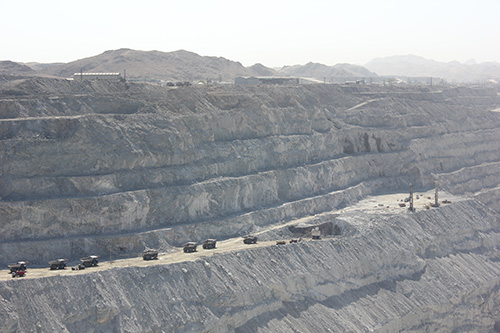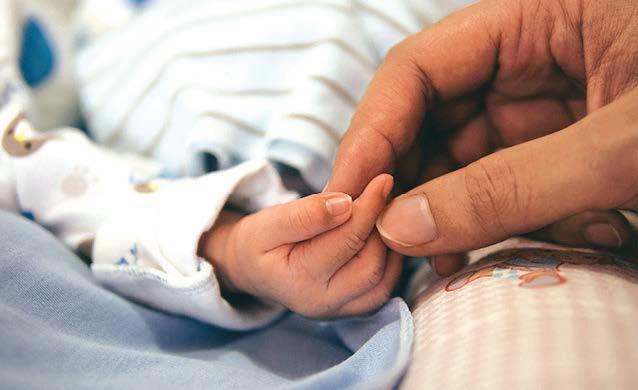Namibia, a mining frontier for decades, continues to struggle with mining companies which subject workers to dangerous working conditions.
Among the alleged culprits are Australian multinationals. Well-established Australian companies face allegations of treating Namibian workers differently by subjecting workers to health risks which would be deemed unacceptable back home.
An International Consortium of Investigative Journalists’ (ICIJ) investigation, in collaboration with The Namibian, found that Australian mining companies have been implicated in instances of death, disfigurement, and the displacement of people across Africa. They have also been responsible for environmental destruction.
That mining in Africa provokes controversy, even violence, is not new. Chinese companies receive regular criticism. Canada, too, has been forced to confront allegations of violence and even slavery linked to its mining companies.
The ICIJ investigation looked at Australia’s increasing role in exploring and developing mining projects on the African continent because it has been less examined.
What ICIJ uncovered and pieced together suggests a troubling track record on the part of Australian companies in the rush for Africa’s minerals, including practices that would be impermissible, even unthinkable, in Australia and other parts of the developed world.
ICIJ found that, at the end of 2014, there were more than 150 Australian-listed active mining companies with recorded properties in Africa. Other estimates, using different criteria, put the number even higher.
Australian companies have 49 mining licences in Namibia; two of those companies are operational.
Even though Australian firms run successful mining companies which contribute to Namibia’s economy and workplace conditions have improved compared to two decades ago, there are still questions about the safety of workers.
Thousands of people, including village chiefs, former employees, human rights defenders and government agencies across Africa have taken Australian companies, their subsidiaries and their contractors to court for alleged negligence, unfair dismissal and eviction or pollution, according to court submissions and judgements unearthed from more than a dozen countries.
Examples include Langer Heinrich Uranium mine, which was investigated in 2013 after a leading trade union, the Mine Workers Union (MUN), called for a probe into claims that pregnant employees were required to work in radiation-exposed areas.
The Langer Heinrich is owned by Paladin Energy. The Chinese state-owned nuclear firm bought shares in the company last year.
Workers’ concerns centre on the safety and health of expectant mothers and the conditions under which they work. According to them, there were cases of women going into premature labour, pregnant mothers having to travel long distances, as well as the alleged disregard of orders issued by doctors.
Even though the medical records of three women who lost unborn babies concluded that two were abortions, a recent report by the office of the Prime Minister also pointed fingers at the Australian mine.
The Prime Minister’s report, obtained last month, said there is a lack of safety at Langer Heinrich and that the workers are not aware of policies, rules and procedures as outlined in the radiation management plan.
It was also found that the company has been tardy when it comes to submitting reports to government. The 2011 annual report was submitted only in April 2013 and the 2012 exposure result provided in July 2013.
The 2011 dose results reviewed by the investigators found some discrepancies that needed to be explained.
“By implication, if it becomes known that a female worker is expecting, the working conditions must be adapted to avoid occupational exposure to ensure that the annual dose remains below ,” said the report.
The report also said that there is minimal information exchange with the workers and their representatives.
According to the investigators, the mine should have a radiation safety officer and assistant dedicated to radiation-related work only. They should be assisted by an appropriate number of assistants based on the work load and the extent of the activities related to radiation safety.
“This is a matter of concern which must be addressed with urgency,” the report said.
Spokesperson of the company Ratonda Katjivikua said the alleged “lack of safety culture” cited in the report mainly related to policies, rules and procedures concerning radiation management, while the section on general safety makes it clear that safety should be the concern of all involved – individual employees, their immediate supervisors, the company, trade unions and indeed the regulatory authorities.
She said LHU started a voluntary onsite pregnancy testing programme.
LHU said a radiation monitoring programme has been operating for some time to determine radiation characteristics around the mine site.
Exploration company Craton Mining and Exploration is a subsidiary of Australian-based International Base Metals. Last year, Craton received a 20-year mining licence to explore the proposed Mitiomire copper mine 140km north-east of Namibia’s capital city Windhoek.
Daily newspaper Namibian Sun reported in 2013 that farmers living close to the mine accused the company of not consulting them over the environmental risks of the project.
Stay informed with The Namibian – your source for credible journalism. Get in-depth reporting and opinions for
only N$85 a month. Invest in journalism, invest in democracy –
Subscribe Now!








